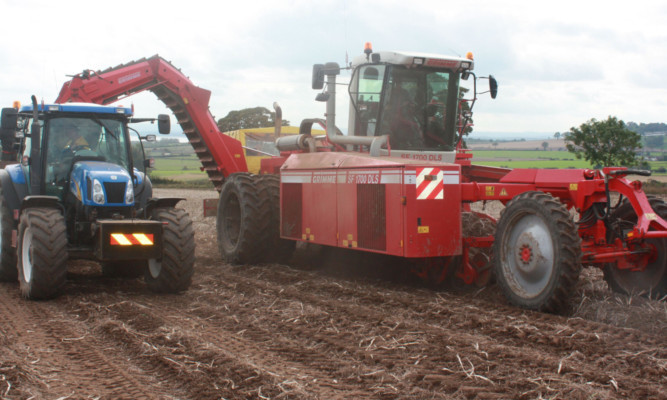Amazing as it might seem there is a complete lack of unanimity as to how to construct a seasonal lease for crops and grazings for this year.
Over decades these have become increasingly important with often the ‘landlord’ and the ‘tenant’ being farmers.
Potato, carrot, pea and vegetable growers now operate on such a scale and with such specialist equipment that access to fresh land on farms other than their own has become vitally important.
Similarly graziers have a long history of renting grass fields for the duration of the season with the values often set by auction.
The other side of the equation sees the ‘landlords’ happy to let out land as a means of maintaining a wide rotation while at the same time allowing them to specialise in their own activities
Now with the planting of crops and the leasing of grass only a few short weeks away it has become very obvious there is no clear way of making these practical and well-established practices absolutely compatible with the new CAP in terms of who should be claiming the entitlements to the new support schemes.
This is particularly important this year with ‘active farming’ by the claimant of the land on May 15 being absolutely critical.
At the annual meeting this week of the Scottish Agricultural Arbiters and Valuers Association (Saava) their adviser, Jeremy Moody, said what might satisfy Scottish Government might not satisfy EU auditors.
At the root of the problem is the claiming of entitlements to the new Basic Payment Scheme.
Mr Moody, who is also secretary and adviser to the Central Association of Agricultural Valuers, warned there were several strict tests which had to be passed before a valid claim could be made.
“The claimant must be the autonomous farmer on the land making the farming decisions and managing the agricultural activity, “ he said.
A seasonal ‘landlord’ might be able to comply with these conditions with a grass field where he had paid for the establishment of the grass and applied fertiliser.
Then it might just be a case of granting a right to the ‘tenant’ to take the crop either by removing it as hay or silage or by grazing it.
Such an approach would be less easy to justify with a crop such as potatoes where the ‘landlord’s’ involvement with the crop is quite peripheral.
Options were put forward at the Saava meeting including the ‘tenant’ acting as contractor with the ‘landlord’ owning the crop while it was in the ground and then selling the crop to the ‘tenant’ for the equivalent of the rent.
It might, however, be unlikely that such an arrangement would pass an EU test of “artificiality”.
It would also be possible for the ‘tenant’ to claim the entitlements and then hand them back to the ‘landlord’ at some point in the future but there was a danger that 50% would be lost through a siphon back to the National Reserve.
“There is a spectrum of risk across all options,” Mr Moody said.
“CAP law does not fit with traditional practices.
“We have to ask what will stand EU auditor scrutiny and what constitutes prudent professional advice.”
The Scottish Government seems to take a simpler view of the problem.
Following a request from The Courier, a spokesman said:“The new CAP regime does not change the existing arrangements for ‘tattie lets’ and the like the entitlement owner, be they tenant or landlord, will be able to apply for Basic and/ or Greening payments when the Single Application Form (Saf) window opens.
“The terms of any further sub-letting and/or contractual agreements (for example, permitting ground to be used to grow potatoes) depends on the entitlement holder reaching a workable agreement with the grower that takes into account cross-compliance obligations under the relevant scheme.
“Our advice continues to be that all parties involved in the agreement should agree a clear breakdown of responsibilities for each of the cross-compliance conditions; otherwise, the default position is that the entitlement holder is responsible.”
Jonnie Hall, policy director with NFU Scotland, took a similar view suggesting that by supplying the land in good agricultural condition to grow a crop of potatoes, peas or whatever, the ‘landlord’ was proving that he was an “active farmer”.
It was critical, however, to make sure that only one claim was made on the land and ‘landlord’ and ‘tenant’ should be very particular about this.
Pat Lawson, of United Auctions in Stirling, will shortly be conducting grass lets by auction.
“Providing the landowner qualifies under the active farmer rules he or she should claim the entitlements and the rents offered will allow for that,” he said.
“I mean to offer lets from April 1 to May 14 and then from May 16 to October 31.
“That will make sure that the landowner is definitely in control of the land on May 15 which is the vital date,” he said.
